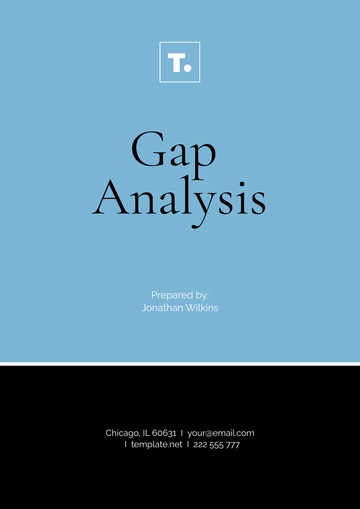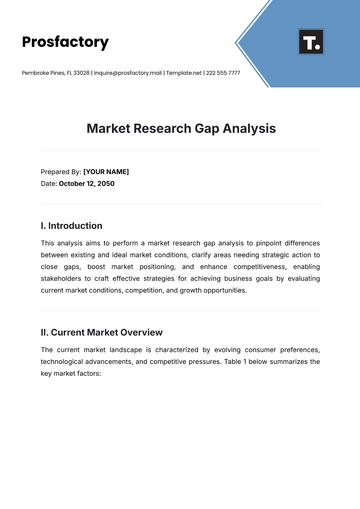Free Artist Journal Literary Analysis

Prepared by: [Your Name]
Date: [Date]
I. Introduction
The Artist Journal Literary Analysis presents a comprehensive exploration of the reflections, sketches, and notes captured in an artist’s journal. This analysis decodes the underlying themes and stylistic choices present within the journal, offering insights into the artist’s creative process and the evolution of their artistic journey. By examining these personal entries, we uncover the influences and motivations that drive the artist's work, providing a richer understanding of their artistic practice. The analysis will be presented in a narrative format, complemented by tables and lists to ensure clarity and thorough examination.
II. Contextual Background
To fully appreciate the significance of the artist's journal, it is essential to understand the context in which it was created. This section provides an overview of the artist’s background, the historical and cultural setting, and the purpose behind maintaining the journal.
A. Artist Biography
The artist, Elena Martinez, was born in 2050 in Barcelona, Spain. Renowned for her work in contemporary abstract painting, Martinez has made a significant impact on modern art with her innovative use of color and form. She began documenting her artistic process in her journal in 2070 as a means of tracking her evolving creative ideas, personal reflections, and the emotional undercurrents influencing her work.
B. Historical and Cultural Setting
The journal covers a period marked by significant events such as the rise of digital and virtual art platforms and global environmental challenges. During this time, the cultural landscape was also shaped by movements like the Post-Digital Art Movement, which deeply influenced Martinez’s style. The socio-political climate, characterized by a growing emphasis on sustainability and technological integration, is reflected in her thematic exploration.
III. Content Analysis
This section explores the individual entries found in the artist's journal, examining recurring themes, significant entries, and the subjects addressed.
A. Recurring Themes
Expression of Emotions and Inner Turmoil
Example: Martinez frequently reflects on her personal struggles with existential questions and their impact on her work. Entries such as March 5, 2052, detail how her emotions translate into abstract forms and color schemes.
Social Commentary and Critique
Example: Her journal includes critical reflections on contemporary issues like technological overreach and climate crisis. For instance, June 22, 2053, describes her response to a major climate event through a series of visceral, expressive paintings.
Exploration of Nature and the Sublime
Example: Martinez often writes about her experiences in nature and how they inspire her work. On August 15, 2054, she documents a transformative hike that led to a series of landscapes reflecting the sublime aspects of nature.
The Quest for Identity and Self-Understanding
Example: The journal entries explore Martinez’s evolving sense of self and her search for identity as an artist. November 10, 2055, reveals her introspection about her role in the art world and her personal artistic voice.
B. Important Entries
Date | Summary | Significance |
|---|---|---|
March 5, 2052 | A detailed reflection on how personal existential questions affect her art. | Highlights the emotional depth and vulnerability in her abstract pieces. |
June 22, 2053 | A critique of environmental and technological issues and their representation in her artwork. | Connects societal issues with her artistic practice, showcasing her engagement with contemporary issues. |
August 15, 2054 | Describes a hike that inspired a new series of nature-themed paintings. | Demonstrates the impact of natural experiences on her creative process. |
IV. Stylistic Analysis
This section examines the stylistic elements of the artist’s journal, focusing on language, visual components, and overall structure.
A. Language and Tone
Descriptive Language: The journal is rich with vivid, sensory descriptions. For instance, April 8, 2056, uses elaborate descriptions of a sunrise to convey its impact on her mood and creative direction.
Reflective Tone: A contemplative tone pervades the entries, such as those on February 20, 2057, which delve into personal growth and artistic development.
Poetic Elements: Martinez occasionally employs poetic devices. For example, September 12, 2058, features metaphors comparing her creative process to a storm.
B. Visual Components
Sketches: The journal includes preliminary sketches that visualize concepts. May 30, 2059, showcases early drafts for a new series exploring abstract forms.
Doodles: Informal doodles, like those found on July 14, 2060, offer insight into her subconscious thoughts and playful creativity.
Illustrated Diagrams: Diagrams on October 3, 2061, break down complex compositions and color schemes used in her paintings.
C. Journal Structure
Date and Time: Entries are meticulously dated, such as March 1, 2062, highlighting the chronological development of ideas.
Subject or Theme: Each entry begins with a concise heading, e.g., "Reflections on Urban Life" for an entry on November 15, 2063.
Main Body: The core of each entry includes detailed reflections, often segmented into bullet points or paragraphs for clarity.
Concluding Thoughts: Many entries end with reflections on future directions, such as January 25, 2064, where Martinez contemplates upcoming projects.
V. Interpretation
Interpreting the journal involves synthesizing the content and stylistic elements to understand the artist's creative process, influences, and work evolution.
A. Creative Process
Martinez’s creative process is marked by:
Reflection: Initial ideas and emotions are documented, as seen in January 10, 2065.
Experimentation: Exploration of new techniques, documented on April 25, 2066.
Execution: Final works are developed based on these explorations.
Evaluation: Post-creation reflections on June 30, 2067, demonstrate her critique and analysis.
B. Influences
Personal Experiences: Significant life events, like a major technological breakthrough in 2068, impact her work.
Cultural and Historical Context: The rise of digital media and sustainability movements influence her artistic approach, documented throughout the journal.
Artistic Movements: Engagement with movements such as Post-Digital Art and Eco-Art.
Philosophical and Theoretical Ideas: Reflections on philosophical concepts, including transhumanism, shape her creative approach.
C. Evolution of Work
The journal reveals:
Increased Complexity: From simpler compositions in early entries to intricate works in later stages.
Technical Mastery: Improved skills, such as advanced techniques in virtual reality art and interactive media.
Conceptual Depth: A deepening of thematic and conceptual concerns, reflecting a more profound understanding of her artistic intent.
VI. Conclusion
This Artist Journal Literary Analysis has provided a detailed examination of Elena Martinez's journal, revealing the intricate interplay between her thoughts, emotions, and artistic creation. By interpreting the journal's content and stylistic elements, we gain valuable insights into her creative process, influences, and artistic evolution. The journal serves as a vital tool for understanding the complexities of Martinez’s artistic development, offering a window into her creative mind and the evolution of her work.
- 100% Customizable, free editor
- Access 1 Million+ Templates, photo’s & graphics
- Download or share as a template
- Click and replace photos, graphics, text, backgrounds
- Resize, crop, AI write & more
- Access advanced editor
Explore creative expression with the Artist Journal Literary Analysis Template from Template.net. This editable and customizable template provides a structured yet flexible format for analyzing artistic works. Editable in our Ai Editor Tool, it allows you to personalize your entries and insights, making it an ideal tool for artists, students, and critics to document and reflect on their analyses.





























